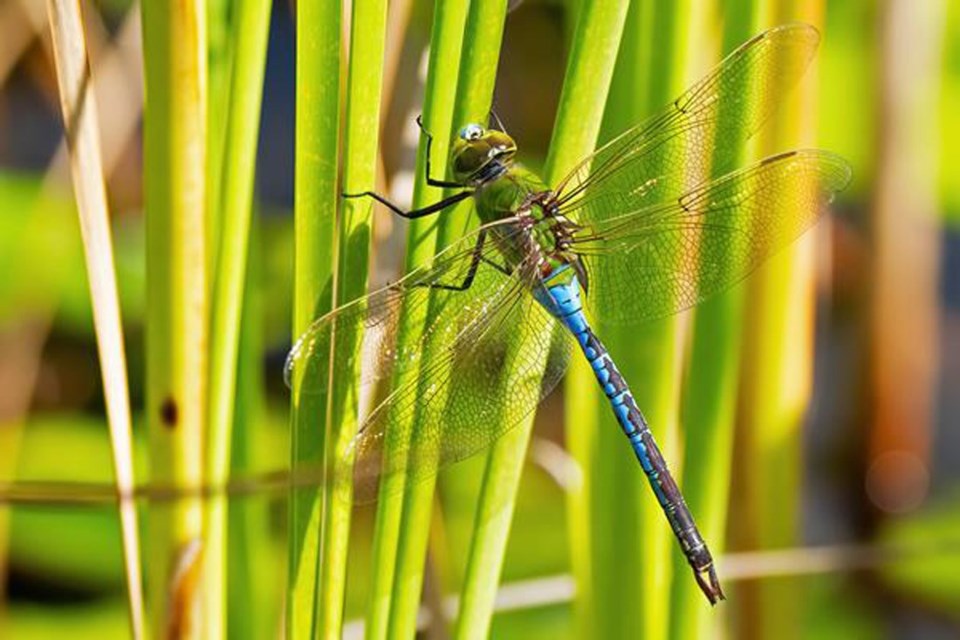OAK HAMMOCK MARSH - Dragonflies have been around for 300 million years, predating even the dinosaurs. During this time, they’ve experienced a lot of environmental changes—and adapted to them. But today’s colliding crises of habitat loss and climate change may be more than these iconic winged creatures can survive. A new campaign from Ducks Unlimited Canada (DUC) shines a spotlight on the worldwide decline of dragonflies while raising funds for much-needed wetland conservation efforts that will bolster biodiversity as a whole.
The International Union for Conservation of Nature recently added 16 per cent of the world’s 6,016 species of dragonflies and damselflies to its Red List of Threatened Species. It cited the widespread loss of wetlands—the marshes, bogs and swamps where they breed—as the driving factor behind drops in global populations. The news is sending off alarm bells for conservation organizations like DUC.
“You can think of them as the ‘canaries in the coalmine,’” says Larry Kaumeyer, CEO of DUC. “Dragonflies are extremely sensitive to changes in the environment, which makes their welfare a strong indicator of the overall welfare of our wetlands. These amazing insects are sending us a clear message about the fate that could potentially befall hundreds of other species that depend on wetlands during their life cycles.”
DUC has launched , a campaign focused on the need to conserve and restore wetlands across Canada to support biodiversity. Up to 40 per cent of the world’s wildlife species live and breed in wetlands. In Canada, this includes more than 500 species of wildlife—97 of which are identified as 小蓝视频 at risk. Each forms part of an interconnected system that starts to weaken as individual species become threatened or extinct.
Troublesome is the fact that Canada does not yet have a comprehensive wetland inventory and monitoring system to effectively measure wetland loss. Current estimates suggest that up to 70 per cent of wetlands have been lost in southern parts of Canada, and up to 95 per cent in densely populated areas. Add the growing impacts of climate change on both wildlife and habitat and the threats become even greater.
These threats have serious implications for another important species: humans.
“We can’t overlook the important fact that people are also highly dependent on wetlands for drinking water, food production, recreation and the health of local economies,” says Kaumeyer. “So, if a species like the dragonfly, which has been around for hundreds of millions of years, is struggling to find ways to survive with fewer and fewer wetlands on the landscape, what does that mean for us?”
On World Wildlife Day (March 3), DUC urges Canadians to listen to what dragonfly populations are telling us about the urgency of biodiversity and habitat loss. Find out more about what their message means for Canada and what we can do before it’s too late.





